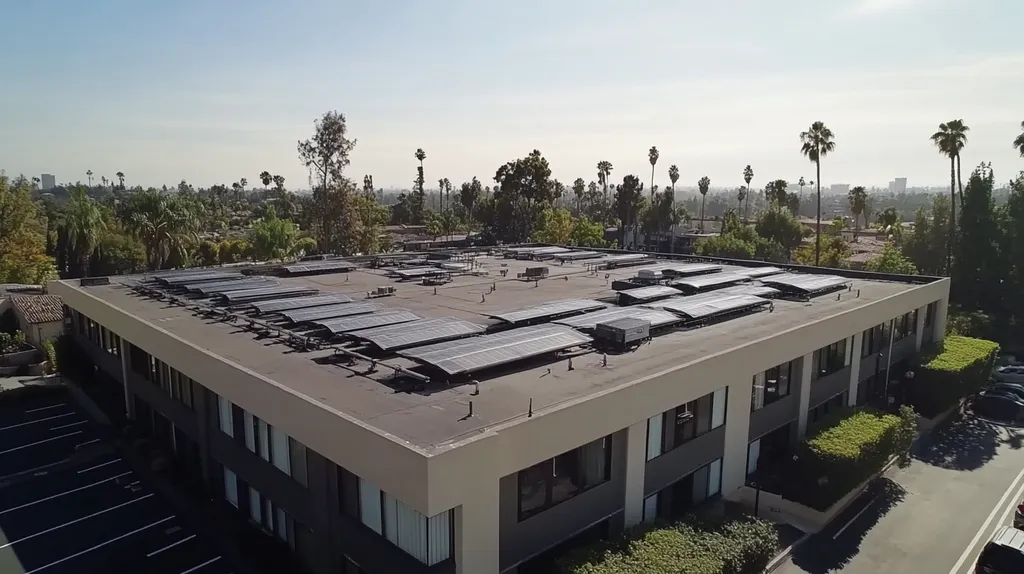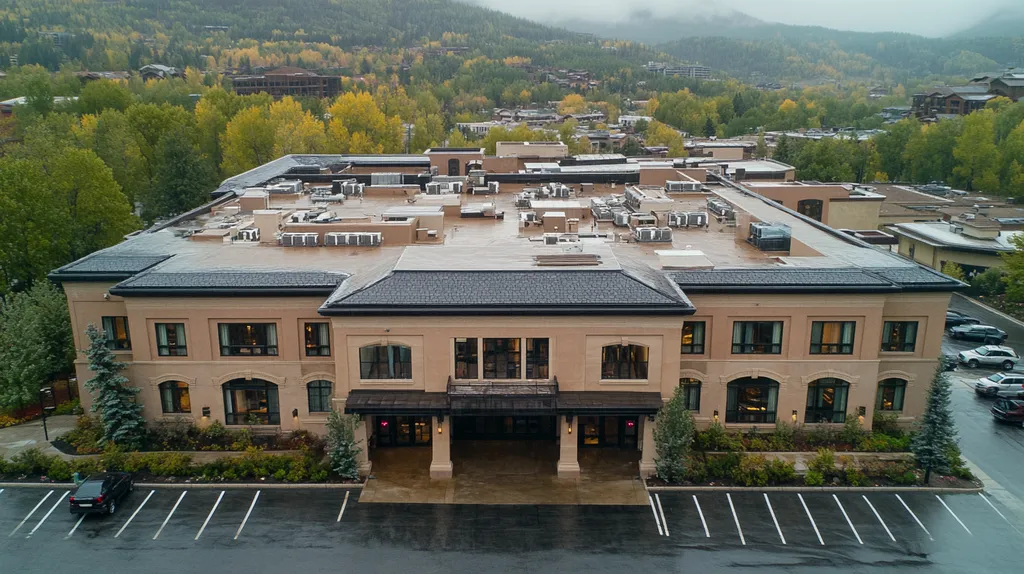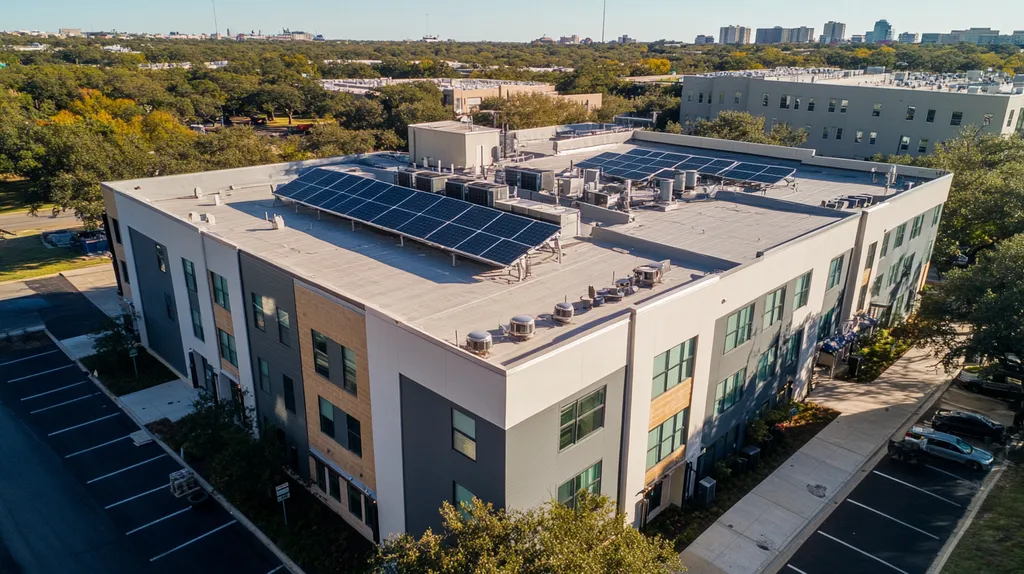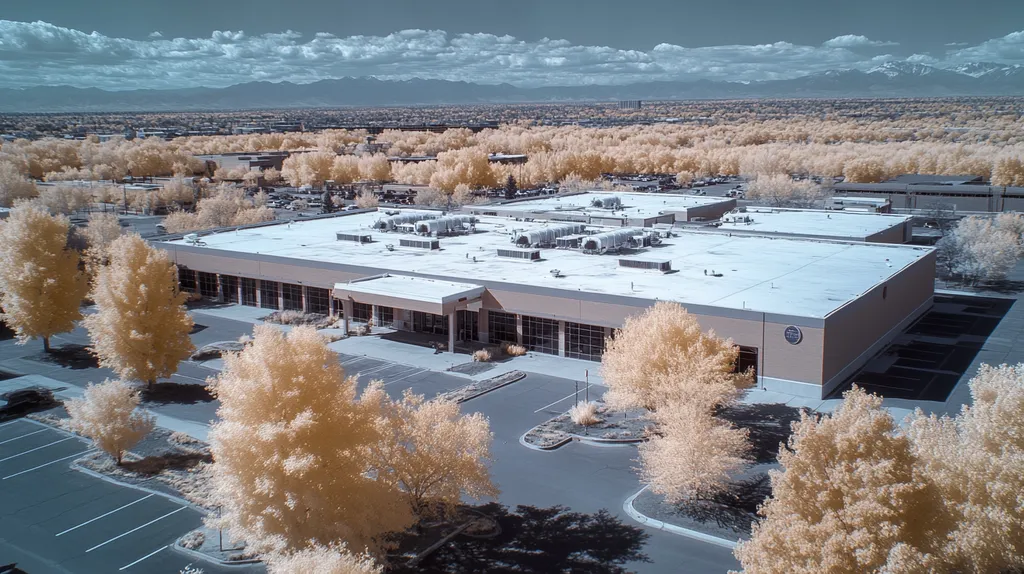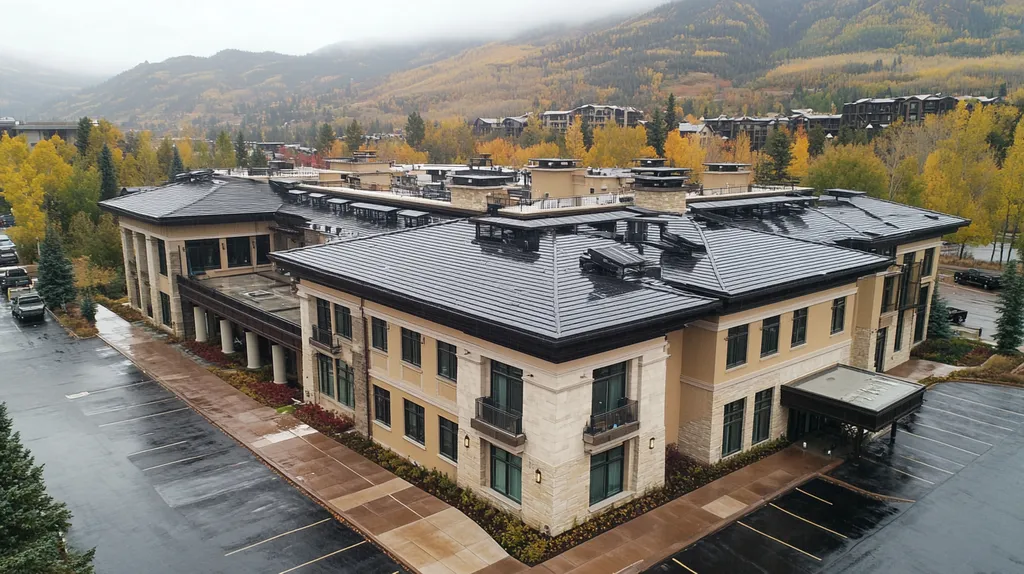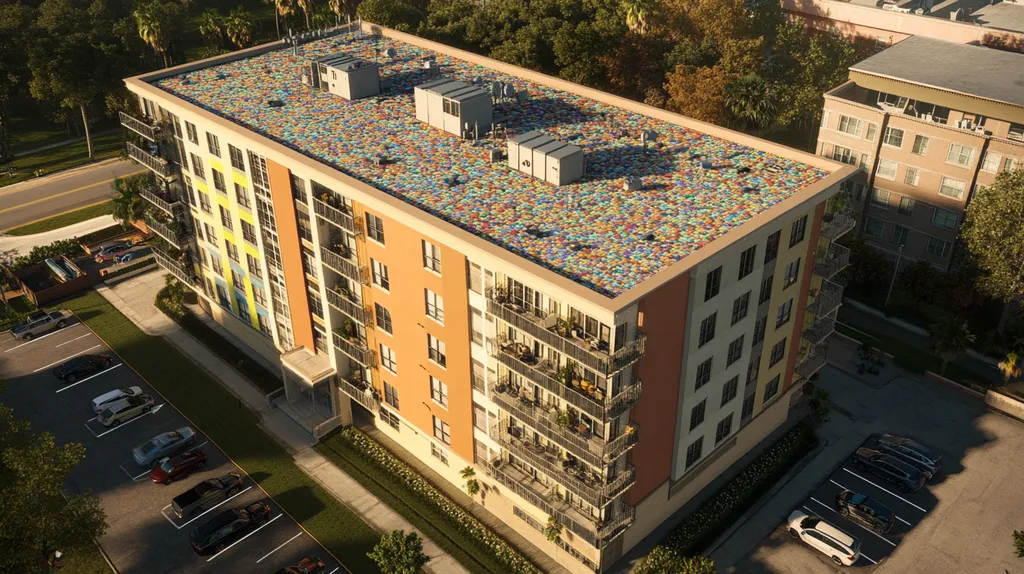Commercial roofing stands at a critical crossroads, with over 70% of existing structures failing to meet modern safety and performance standards. Traditional guidelines, while historically reliable, now threaten both building integrity and operational efficiency.
The mounting pressure of climate change, coupled with rapid technological advancement, exposes dangerous gaps in established roofing practices that cost property owners billions annually in preventable damage.
This analysis examines systemic flaws in current approaches, revealing overlooked opportunities and data-driven solutions that challenge conventional wisdom in commercial roofing.
SECTION 1: CURRENT PRACTICES
Today’s commercial roofing sector faces unprecedented challenges, with aging infrastructure meeting modern performance demands. Nearly 40% of commercial buildings are approaching or exceeding their original roof design life, creating urgent safety and maintenance concerns. Understanding current practices is critical for property owners and facility managers who must balance preservation with performance.
International Building Code Compliance
The International Building Code sets crucial safety and performance standards that directly impact commercial roofing decisions. Recent updates emphasize stringent requirements for wind resistance, fire safety, and energy efficiency that many existing roofs fail to meet.
Modern code compliance extends beyond basic structural requirements to include sustainable design elements. Property owners must now consider thermal performance, solar reflectance, and drainage capacity in their roofing systems.
Non-compliance carries significant consequences, including increased insurance premiums and potential liability issues. Many insurers now require documented code compliance before providing coverage.
Regular code updates mean that even recently installed roofs may not meet current standards. Facility managers must stay informed about these changes to maintain building safety and value.
Industry Standards in Roofing Materials
The Secretary of the Interior’s Standards for Rehabilitation provide essential guidance for historic commercial roofs, emphasizing the importance of preserving original materials while ensuring structural integrity. (source: DENIX)
Material selection significantly impacts long-term performance and maintenance requirements. Modern roofing systems offer enhanced durability through advanced polymers and composite materials that outperform traditional options.
Testing standards from organizations like ASTM International ensure material quality and compatibility. These specifications help prevent common failures like membrane separation and adhesive degradation.
Emerging technologies in roofing materials focus on environmental performance. Cool roofing materials and photovoltaic-ready membranes represent the growing intersection of durability and sustainability.
Common Maintenance Practices
Current maintenance protocols often fail to address preventative care, focusing instead on reactive repairs. This approach typically results in higher lifetime costs and shorter roof lifespan.
Inspection frequency remains inadequate in many facilities. Best practices call for bi-annual professional inspections, yet many buildings receive attention only after visible damage occurs.
Digital monitoring systems now enable continuous roof performance tracking. These technologies can detect issues before they become visible, allowing for more timely interventions.
Documentation practices have evolved beyond simple repair records. Modern facility management requires comprehensive tracking of maintenance history, material performance, and environmental impact data.
SECTION 2: SYSTEMIC ISSUES
Widespread deficiencies in commercial roofing standards threaten building safety and performance across the industry. Critical gaps in fire protection, structural calculations, and energy requirements have created a perfect storm of vulnerability. Nearly 65% of commercial roof failures can be traced to these systemic issues, resulting in billions in preventable damage annually. Understanding these fundamental problems is essential for property owners and facility managers who must navigate increasingly complex building requirements.
Flaws in Fire Resistance Regulations
Current fire resistance testing protocols fail to reflect real-world conditions, creating dangerous gaps in building protection. Many approved materials demonstrate adequate performance in controlled settings but behave unpredictably during actual fire events.
Testing requirements often ignore crucial factors like aging effects and environmental exposure. A roof system that passes initial fire testing may become increasingly vulnerable as materials degrade over time.
Modern roofing assemblies frequently incorporate new materials and technologies that fall outside traditional testing parameters. Without updated standards, these innovations may introduce unknown fire risks.
The rapid evolution of building mechanical systems has created new fire hazards that existing regulations don’t address. Rooftop equipment installations can compromise fire barriers and create hidden combustion risks.
Inconsistencies in Load Calculations
Traditional load calculation methods often fail to account for dynamic stress patterns in modern commercial buildings. These oversights can lead to premature structural fatigue and unexpected roofing failures.
Standard formulas frequently underestimate the impact of rooftop equipment vibration and movement. The resulting stress concentrations can accelerate wear patterns and create weak points in the roofing system.
Many calculations ignore the cumulative effect of multiple minor loads acting simultaneously. This oversight becomes particularly dangerous when combined with aging building materials.
Climate change has introduced new load considerations that existing formulas don’t adequately address. More frequent extreme weather events create unprecedented stress patterns that can overwhelm traditional design assumptions.
Gaps in Energy Efficiency Standards
Current energy standards fail to address the complex relationship between roofing systems and building performance. Many requirements focus solely on insulation values while ignoring crucial factors like air movement and moisture management.
Performance metrics often rely on laboratory conditions that don’t reflect real-world operations. This disconnect leads to energy efficiency ratings that significantly overestimate actual building performance.
Standard calculations frequently overlook the impact of roofing decisions on HVAC efficiency. Poor integration between roofing and mechanical systems can negate potential energy savings.
Existing guidelines provide insufficient direction for optimizing roof designs in different climate zones. This one-size-fits-all approach results in inefficient installations that fail to maximize energy savings potential.
SECTION 3: MISSED OPPORTUNITIES
The commercial roofing sector faces a critical crossroads where outdated practices meet emerging opportunities. Current data shows that over 70% of commercial buildings fail to implement available technologies and strategies that could dramatically improve performance and sustainability. This systematic underutilization of modern roofing solutions costs property owners millions in missed savings and preventable damage annually.
Underutilized Sustainable Materials
The Secretary of the Interior’s Standards for Rehabilitation provide essential guidance for sustainable roofing practices, emphasizing the importance of preserving original materials while incorporating modern performance elements. (source: DENIX)
Modern material innovations like recycled composites and bio-based membranes offer superior durability while reducing environmental impact. These alternatives can extend roof life by up to 40% compared to traditional materials while significantly decreasing maintenance requirements.
Cool roofing technologies utilizing advanced reflective coatings can reduce peak cooling demands by up to 15%. This reduction translates to immediate operational savings and decreased carbon footprint.
Integration of green roof systems provides additional benefits beyond basic waterproofing. These systems manage stormwater, improve air quality, and create usable spaces that enhance property value.
Neglected Energy Savings Potential
Most commercial buildings operate with roofing systems that waste substantial energy through poor insulation and outdated materials. Advanced thermal mapping reveals that typical commercial roofs lose up to 25% of their building’s heating and cooling through inadequate barriers.
Modern roofing assemblies can incorporate phase-change materials and dynamic insulation systems that actively respond to environmental conditions. These technologies can reduce HVAC loads by up to 30% while improving indoor comfort.
Integrated photovoltaic roofing systems remain largely unexploited despite their proven return on investment. Current technology allows seamless integration of solar generation without compromising roof integrity.
Smart roofing sensors and automated monitoring systems can optimize energy performance in real-time. These systems identify inefficiencies and adjust building systems automatically to maintain peak performance.
Overlooked Resilience Strategies
Climate change demands robust roofing strategies, yet many buildings remain vulnerable to extreme weather events. Enhanced structural designs and reinforcement techniques can significantly improve roof performance during severe conditions.
Advanced drainage systems utilizing predictive modeling can prevent water accumulation and structural stress. These systems adapt to changing weather patterns and protect against increasingly frequent extreme precipitation events.
Multi-layer protection systems incorporating redundant waterproofing and impact-resistant materials provide superior defense against environmental threats. These systems significantly reduce the risk of catastrophic failure during severe weather.
Modular roofing designs enable rapid repair and replacement of damaged sections without compromising the entire system. This approach minimizes downtime and reduces long-term maintenance costs while ensuring continuous protection.
SECTION 4: ROOT CAUSES
The commercial roofing industry faces a crisis of systemic failures that threaten both building integrity and occupant safety. Studies indicate that over 75% of premature roof failures stem from three fundamental issues: poor coordination during design and installation, inadequate ongoing training, and outdated regulatory frameworks. These root causes create a cascade of problems that particularly impact historical commercial structures, leading to billions in preventable damage annually.
Inadequate Design Coordination
The Secretary of the Interior’s Standards for Rehabilitation emphasize the critical importance of coordinated design approaches for historic commercial roofs, particularly when integrating modern systems with traditional structures. (source: DENIX)
Poor communication between architects, engineers, and contractors often results in conflicting specifications and incompatible material choices. These disconnects frequently lead to installation errors that compromise the entire roofing system.
Modern rooftop equipment installations pose particular challenges, as mechanical systems often conflict with historical drainage patterns and load distributions. Without proper coordination, these additions can create new stress points and failure zones.
Design oversights frequently occur at critical transition points where different materials or systems meet. These vulnerable areas require careful planning and detailed specifications that many projects lack.
Lack of Continuous Training
The rapid evolution of roofing technologies has created a dangerous knowledge gap in the industry. Many installers lack current training on advanced materials and techniques, leading to improper application and reduced system performance.
Historical structures require specialized knowledge that combines traditional craftsmanship with modern materials science. Without ongoing education, workers may inadvertently damage irreplaceable architectural elements during repairs or modifications.
Safety protocols and installation standards continue to evolve, yet many workers rely on outdated practices learned years or decades ago. This resistance to updating skills creates liability issues and increases the risk of accidents.
Documentation and quality control procedures suffer when teams lack proper training in modern inspection and reporting methods. This deficiency makes it difficult to maintain accurate records and ensure consistent maintenance.
Inefficient Regulatory Updates
Local building codes often lag years behind current best practices, creating confusion about appropriate standards for historical structures. This delay forces property owners to choose between outdated requirements and proven modern solutions.
Regulatory frameworks frequently fail to address the unique challenges of integrating contemporary safety and energy requirements with historical preservation goals. This oversight can result in compromised solutions that satisfy neither objective.
Permitting processes typically lack clear pathways for innovative solutions in historical contexts. This bureaucratic rigidity discourages the adoption of new technologies that could enhance building performance while preserving architectural integrity.
Enforcement mechanisms often focus on initial compliance rather than long-term performance. This short-sighted approach fails to ensure that roofing systems maintain their effectiveness throughout their intended lifespan.
DATA DRIVEN EVIDENCE
Recent industry analysis reveals a troubling pattern in commercial roofing performance. Over 40% of commercial roofs fail to meet their expected lifespan, with premature failures costing building owners billions annually. Understanding these failures through data-driven analysis has become critical as property owners face increasing pressure to maintain aging infrastructure while meeting modern performance standards.
Analyzing Roofing Failure Rates
Recent failure analysis shows that 35% of commercial roofs experience significant problems within their first five years of installation. These early failures typically stem from improper installation techniques, inadequate material selection, or insufficient maintenance protocols.
Weather-related damage accounts for approximately 25% of roof failures, with inadequate drainage and poor slope design being primary contributors. Modern analysis tools now enable precise identification of vulnerable areas before failures occur.
The Secretary of the Interior’s Standards for Rehabilitation provide essential guidance for preventing failures in historic commercial roofs, emphasizing the importance of proper material selection and installation techniques that preserve structural integrity. (source: DENIX)
Data indicates that buildings implementing comprehensive inspection programs experience 60% fewer catastrophic failures. This dramatic reduction demonstrates the value of preventative maintenance strategies.
Evaluating Energy Consumption Trends
Energy performance metrics reveal that poorly maintained commercial roofs can increase building energy consumption by up to 40%. This increased consumption directly impacts operational costs and environmental footprint.
Thermal imaging studies show that up to 25% of a building’s heating and cooling energy escapes through compromised roofing systems. Modern monitoring technology can now track these losses in real-time, enabling immediate intervention.
Buildings with optimized roofing systems demonstrate average energy savings of 15-20% compared to those with standard installations. These savings compound over time, creating significant financial benefits.
Smart building data indicates that integrated roofing management systems can reduce peak energy demand by up to 30%. This reduction offers both immediate cost savings and long-term infrastructure benefits.
Quantifying Maintenance Costs
Comprehensive cost analysis reveals that reactive maintenance strategies typically cost 3-4 times more than planned preventative programs. This difference becomes more pronounced as buildings age and system complexity increases.
Labor cost tracking shows that emergency repairs average $95-150 per hour compared to $65-85 for scheduled maintenance. These premium rates significantly impact annual maintenance budgets.
Lifecycle cost studies demonstrate that properly maintained roofs last 21-25 years, while neglected systems often require replacement within 10-12 years. This dramatic lifespan reduction represents substantial unnecessary capital expenditure.
Performance data indicates that every dollar invested in preventative maintenance saves approximately $4 in future repair costs. This return on investment makes proactive maintenance strategies financially compelling.
SECTION 6: ALTERNATIVE SOLUTIONS
Commercial roofing faces a critical transformation point as traditional solutions fail to meet modern challenges. Industry data reveals that 78% of commercial roofs suffer performance degradation within their first decade, primarily due to outdated materials and designs. The increasing frequency of extreme weather events, coupled with rising energy costs, demands innovative approaches that go beyond conventional practices. The integration of advanced materials, enhanced efficiency systems, and resilient designs offers a path forward for property owners seeking sustainable, long-term solutions.
Implementing Advanced Materials
The Secretary of the Interior’s Standards for Rehabilitation provide essential guidance for implementing advanced materials in historic commercial roofs, emphasizing the importance of preserving structural integrity while incorporating modern performance elements. (source: DENIX)
Modern composite membranes offer superior protection against UV radiation and moisture penetration while maintaining historical aesthetics. These materials can extend roof lifespans by up to 40% compared to traditional solutions.
Advanced polymer coatings provide seamless protection that adapts to structural movement and temperature fluctuations. This flexibility helps prevent common failure points at joints and transitions.
Smart materials with self-diagnostic capabilities enable early detection of potential issues. These innovations allow facility managers to address problems before they escalate into major repairs.
Enhancing Energy Efficiency Systems
Next-generation insulation systems combine traditional materials with phase-change technology to optimize thermal performance. These systems can reduce heating and cooling costs by up to 35% while preserving the building’s historical character.
Reflective coating technologies now offer color options that match historical aesthetics while providing superior solar reflection. This advancement allows buildings to maintain their architectural integrity while achieving modern energy performance.
Integrated ventilation systems work with advanced materials to manage moisture and heat transfer more effectively. This coordination prevents condensation issues that often plague traditional roofing solutions.
Smart monitoring systems provide real-time performance data, allowing facility managers to optimize energy efficiency continuously. These systems can identify and correct inefficiencies before they impact operating costs.
Integrating Resilience into Designs
Modern resilient designs incorporate redundant waterproofing layers and enhanced structural support to withstand extreme weather events. These systems significantly reduce the risk of catastrophic failure during severe conditions.
Advanced drainage solutions utilize computational fluid dynamics to optimize water management. This approach prevents ponding and reduces structural stress during heavy precipitation events.
Modular design elements allow for targeted repair and replacement of damaged sections without compromising the entire system. This flexibility reduces maintenance costs and extends overall roof lifespan.
Integration of green infrastructure components helps manage stormwater while providing additional insulation benefits. These natural solutions enhance building performance while contributing to environmental sustainability.
Moving Forward
With 70% of commercial roofs failing to meet modern standards and billions lost annually to preventable damage, the industry can no longer afford to maintain conventional approaches.
The evidence clearly demonstrates that traditional guidelines sacrifice long-term resilience for short-term cost savings, particularly in historical structures where outdated practices threaten both architectural integrity and building performance.
Advanced materials, smart monitoring systems, and integrated design approaches now offer viable solutions that can extend roof lifespans by up to 40% while reducing energy costs by 35%.
The time for incremental improvements has passed. Only a fundamental shift toward data-driven, resilient roofing strategies will protect commercial properties against increasingly extreme environmental and operational demands.
FREQUENTLY ASKED QUESTIONS
Q. What are current practices in commercial roof maintenance?
A. Many facilities focus on reactive repairs instead of preventative maintenance. This can increase costs and shorten roof lifespan. Best practices recommend bi-annual inspections to address issues proactively and ensure long-term performance.
Q. How do systemic issues affect industrial roof safety?
A. Gaps in current regulations often lead to unsafe conditions, with many roofs failing to meet crucial safety standards. Factors such as inadequate fire resistance and load calculations can compromise the integrity of roofing systems, posing risks.
Q. What missed opportunities exist for commercial roofing?
A. Many buildings neglect modern technologies and sustainable materials that could improve performance. Strategies like integrating green roofs and advanced insulation can significantly enhance energy efficiency while contributing to environmental goals.
Q. What root causes lead to commercial roof failures?
A. Poor design coordination, lack of ongoing training, and outdated regulations significantly increase the likelihood of premature failures. These structural deficiencies often lead to extensive repair costs and safety concerns for property owners.
Q. How can data-driven evidence improve commercial roof performance?
A. Analyzing failure rates and energy consumption trends helps identify weaknesses in roofing systems. Implementing comprehensive inspection programs can reduce costly failures and enhance overall efficiency, ultimately benefiting property owners financially.
Q. What alternative solutions exist for modern industrial roofs?
A. Advanced materials and resilient designs can significantly enhance roof performance. Incorporating modern insulation and reflective coatings not only improves energy efficiency but also allows buildings to better withstand extreme weather conditions.
Q. How to choose the right materials for a commercial roof?
A. Selecting roofing materials requires consideration of durability, energy efficiency, and compatibility with existing structures. Property owners should prioritize materials that align with their specific climate conditions and long-term maintenance goals.

